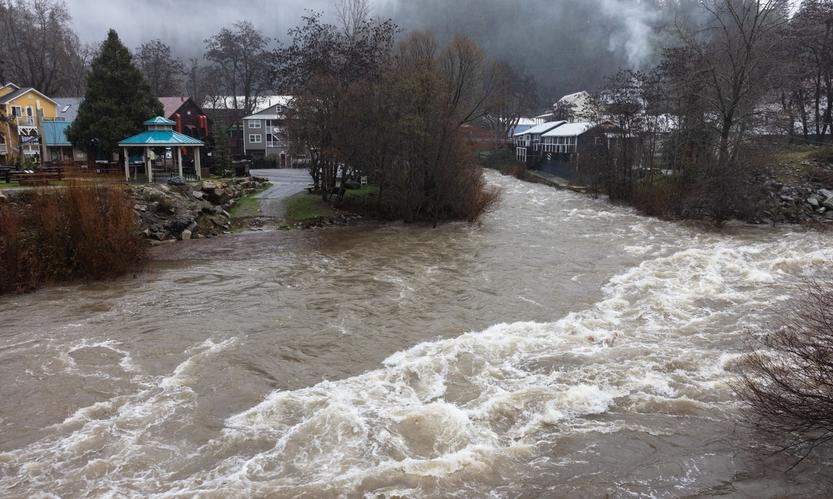Summer has finally appeared in California’s Outback—reluctantly, though, with rain showers that kept falling during the month of June. In June, the first mosquito was swatted and the annual burn permit obtained from the state forestry department. But now, July has rolled in and is slowly torching the landscape. Bring on the hotdogs! Mosquitoes and sage brush stand as sign posts for the high desert. There’s not much to do about the bugs—except dumping out containers with standing water. Once the ground dries out, the sage clearing can start, with about a month of burning until the forestry service suspends the permits. One can spend a whole summer killing mosquitoes and sage and not have much to show for the effort. Both the bugs and brush are profuse and prolific: likely candidates to survive a nuclear winter—and summer. Until late May, there are no mosquitoes, so you can take an early morning walk or evening stroll and not be bothered with “suiting up.” But now, I have to pull on a hoodie and a handmade set of alpaca wool gloves for my pre-breakfast ramble—where at seven a.m. the temperature already edges over 60 degrees F. The gloves are protection against—yes—the mosquitoes. Summertime in the high desert requires almost as much clothing as the wintertime—less the thick socks and flannel-lined jeans. You don’t wear shorts unless you’re confining yourself to the porch or going for a drive. Sandals? Forget it. Toes are easy targets for bugs, stickers—and snakes, for that matter. Boots are de rigueur. Spritz your forehead with repellant, and you can almost have a pleasant amble, as long as you steer clear of swaths of grass or brush or venturing to the nearby Pit River. And, by the way, if you’re going to work outside, safety glasses are more of a necessity than a suggestion, plus earplugs if machinery is being operated, and a mask if cutting weeds is on the agenda where dust is kicked up by whirling blades. There you have it: the basic outfit for the outback. I think the moon-walking astronauts had an easier time getting dressed for an EVA—their extravehicular activity—than one does in the high desert. Do I sound like I’m obsessed over safety? Maybe. It’s a hostile environment up here. The Lassen Trail that brought settlers west passed right by my homestead. Pioneer diaries are replete with mention of the horrors of the journey—mosquitoes being right up there along with lack of water and starvation. Here in no-frills NorCal where coyotes and vultures are first-responders, it’s prudent to be prudent. Eight years into my experiment of living in the country, I’ve just about got the seasons figured out—what happens when, what needs to happen when. I’ve learned to tune into my environment. In the ‘70s, they called this “back to the land,” when folks were keenly in touch with cycles of the moon and subscribed to the Whole Earth Catalog. Here’s what I’ve learned so far: Our mud is unbeatable in March after an hour of rain; you can’t work in the shade in the morning because of the mosquitoes; you will get bitten working in the sagebrush because the mosquitoes like that, too; sometime around Father’s Day, you plant the first vegetable seeds in the raised beds or transplant seedlings—any earlier and the frost will kill them; Belding ground squirrels emerge from their dens in April and will terrorize the landscaping until August, when they hibernate until a few weeks in the fall and they pop back up and chew down the remaining iris and mint. And in August, just when your tomatoes are ripening, a sneak frost will wipe them out. Did I mention weeds? I have a pamphlet from the county ag commissioner’s office describing noxious weeds. I can just about check off every one described as growing on my land. Starting in July, I take weekly ventures on my property and down the county road on “weed patrol”—armed with shovel—to knock down the Canadian thistle. If these plants didn’t have gigantic stickers, they’d be quite a welcome and vivid addition to the landscaping. They can reach over five-feet high and produce large, deep red flowers growing on a stunningly contrasting blue-gray stalk—a design that one might label as steam punk. Like the murderously beautiful eyes of a tiger, they are fatally alluring and bring to mind the poet William Blake’s “Dare its deadly terrors clasp.” In the city and suburbs, all the rough things have been smoothed out, paved over, smothered, suffocated or suppressed. That’s why, one can step outside and walk most places at most times and not find Russian tumbleweed, mosquitoes, or fox tail weeds that, if inhaled, can kill your dog. So, if you want live on the edge or live “in the moment” and “be present”—as Buddha or Ernest Holmes or Eckhart Tolle encourage—then move to high desert—where you have to make a practice of paying attention. They call it being mindful. I call it being smart. If not, you might find a rattlesnake buzzing under foot. A native Californian, H.A. Silliman grew up in the Gold County and currently lives in the northern outback. He is author of The Two Rivers anthology, which also appears in this newspaper. ©2023 H.A. Silliman.The Buzz on the New Season
Featured Articles

Storms Bring Heavy Rainfall and Local Disruptions →
December 22, 2025
Sierra County faces power outages and water issues amid heavy rainfall and storm warnings.
215 Animals Seized for Cruelty from Grass Valley Property →
December 22, 2025
Human Remains Found Near South Yuba Bridge in March Identified →
December 17, 2025
Transfer Station Burn Suspended After Community Concerns →
December 16, 2025
Sierra Hardware Plans Extensive Repairs After Flood Damage →
December 8, 2025